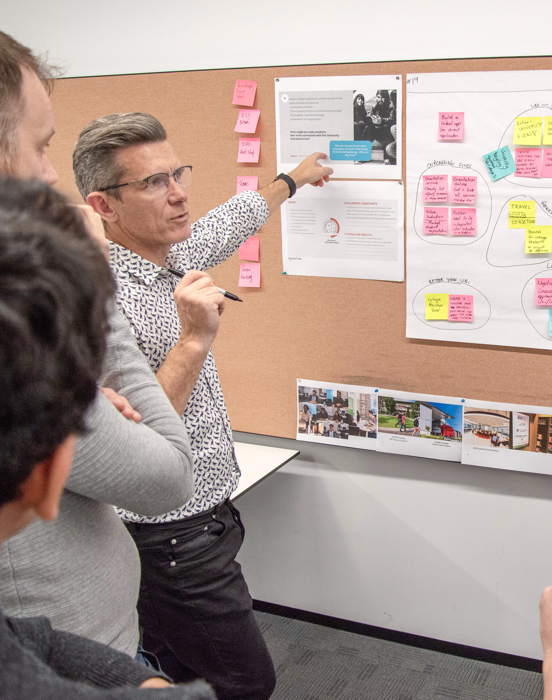Orienting students for successful entry into College life
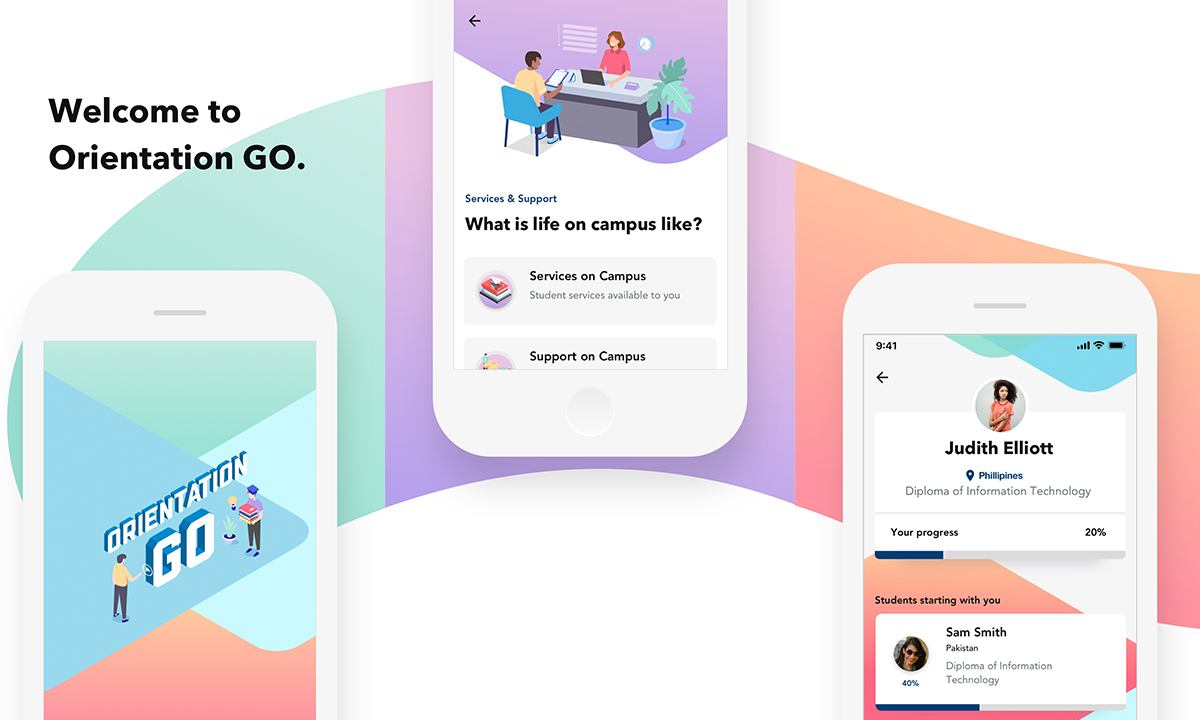
With a student base of over 70,000 each year, Navitas is one the world’s largest providers of tertiary education services. Successfully onboarding and orienting these students is critical to the majority of them successfully matriculating past the crucial census stage of education and through their chosen course of study.
Having conducted in-depth research with existing students, many of them from international backgrounds, we discovered that many have accumulating anxieties and fears that detract from them having positive student experiences. These are as broad as social anxieties regarding how to involve themselves in campus life to simply struggling to navigate their way around a new campus in a new country.
Often with an extended period between receiving an offer and actually arriving for their first day on campus, many of these anxieties grow and students begin their critical initial period of study in a less than positive mindset. It is often not until they present themselves to a Student Support person that these sorts of issues are expressed, quite often too late to remedy and set the student on a more successful path.
We discovered that many international students suffer their in-college anxieties in silence. It’s not until the third or fourth week that they arrive at some form of student councillor to raise the issues, which in many cases is too late to allay their concerns.
Lucy Blakemore - Head of Customer Research and Insights, Navitas.
These insights led to the development of a mobile application, whose purpose was to better acclimatize students to their new location and campus well before any of these fears manifested themselves. Named Orientation Go, the application walks users through a series of curated steps, with a goal of better preparing them for their arrival and life on campus.
Content is structured across 3 core pillars: Building connections with other students, understanding the location and campus, and undertaking basic administration tasks to better prepare them for their arrival in the country and on Campus. Interaction with the application is gamified, with the design visually completing itself as the user completes various tasks and experiences specific content pieces.
The application is part of a wider initiative to improve Digital Customer Experience for students across the board at Navitas. With early uptake of the pilot programme over 50%, the signs are positive that the application will go a long way to better preparing students for their arrival on campus, and allow them to ease into a successful student experience.
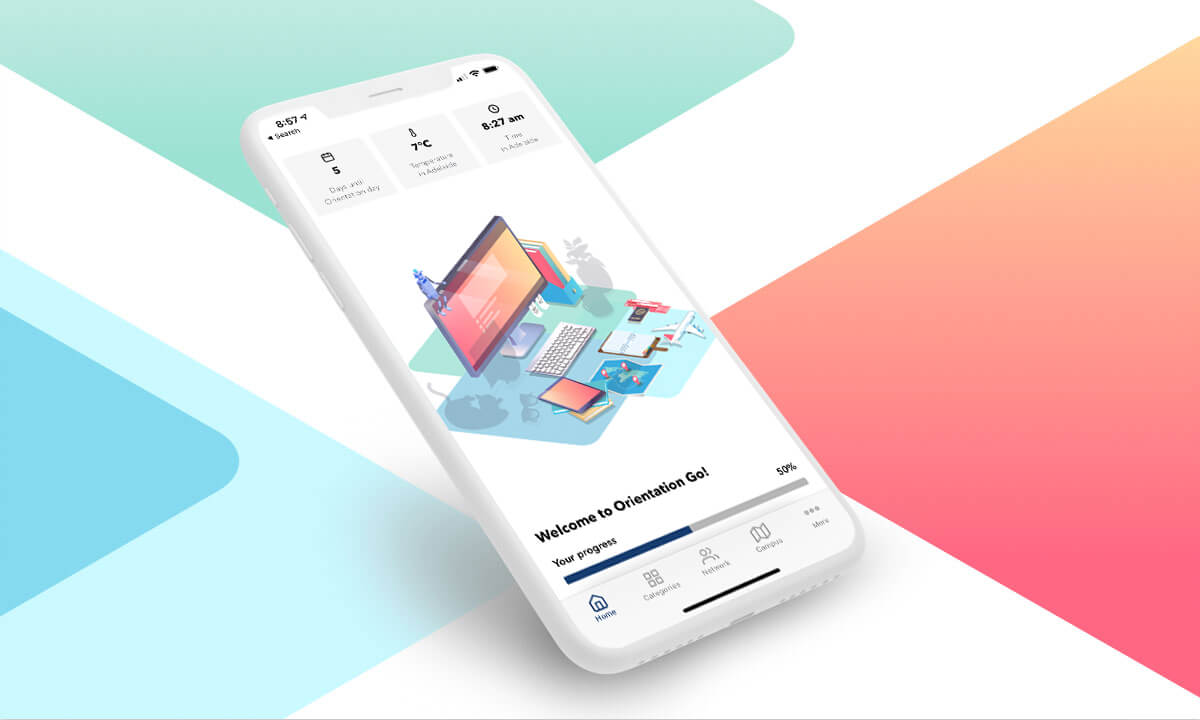
Gameful design
The design of the application grows and expands as the user completes various tasks, with icons and illustrations building as they progress through each key section. This rewards and gently persuades users to complete each section in turn.
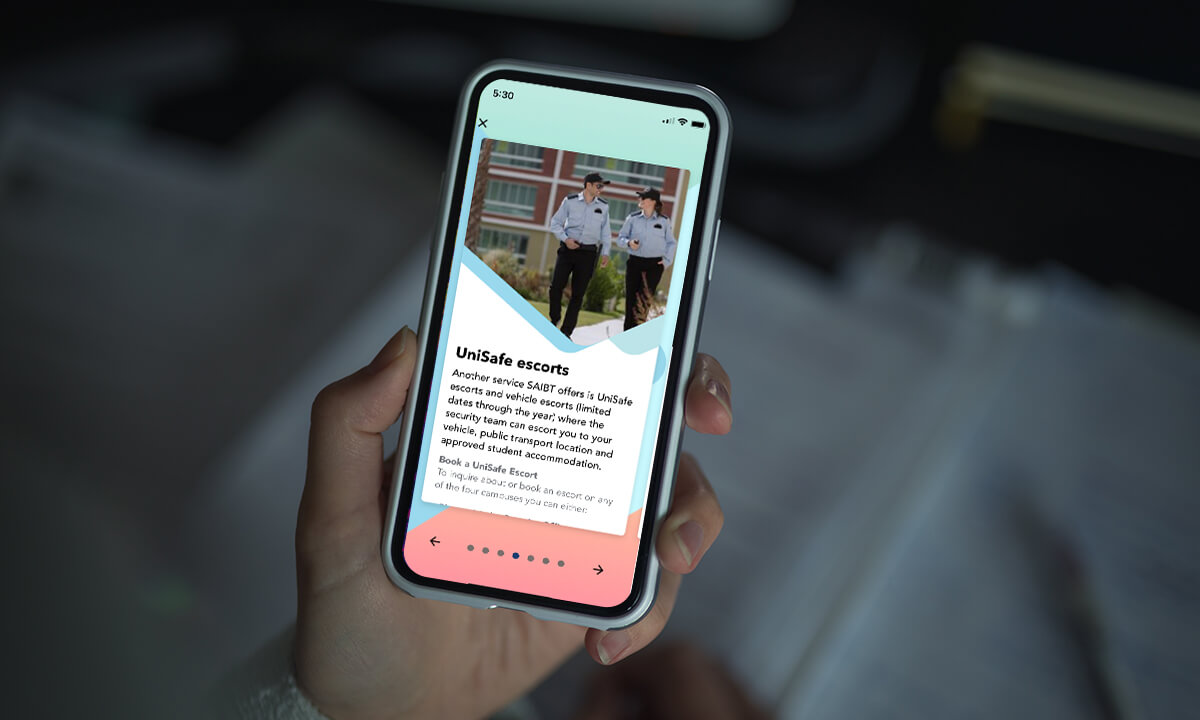
Non-linear learning
Core content pillars structured around key insights regarding anxieties raised by students. Students can explore and undertake each section in a non linear way, allowing them to allay specific concerns in their own preferred order.

Social referencing
the application gently introduces students to other students arriving at the same time. This reinforces the sense of fraternity they should feel as others are experiencing the same thing.
Qualitative insight used to shape the content strategy
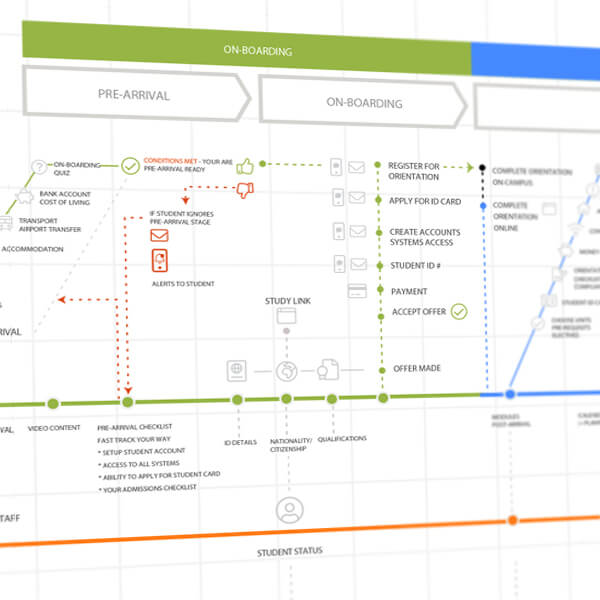
Customer Journey Mapping of the Pre-Orientation experience shaped the information architecture of the guidance solution.

We recently completed a formal launch of the pilot at the SABIT College in Adelaide. The Application had an uptake of over 50% during the pilot. Qualitative feedback gathered during the orientation week was overwhelmingly positive, with many students saying the application has had a positive impact on their entry into University in Australia.
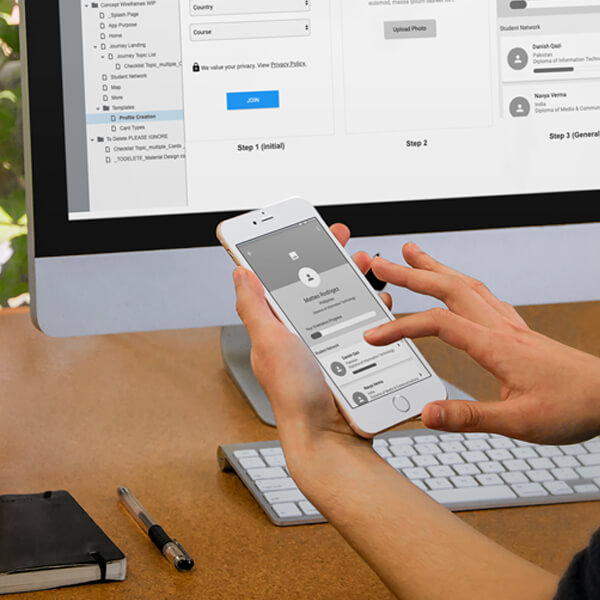
iOS focus for Pilot
The initial pilot focused on the development of an iOS version only

Decoupled Architecture
The platform architecture was decoupled, allowing us to efficiently utilize many elements already in place across other digital experience initiatives.
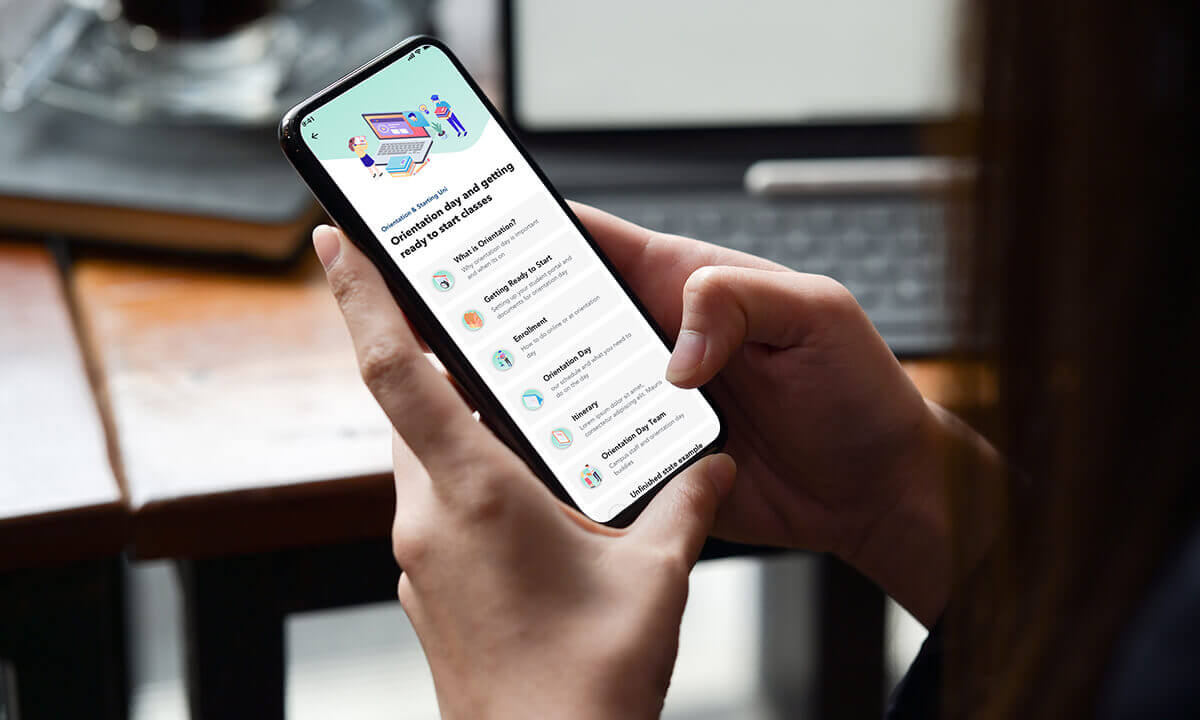
Universal Code Base
The initial pilot was developed in a highly modular, object-oriented way, allowing for it to be scaled to Android and adapted for other college rollouts quickly and cost effectively.


